Who can blame Thomas Jefferson Coolidge for choosing Manchester-by-the-Sea for his summer home? The ocean laps gently at the shoreline, the gusts are shouldered to become breezes before they reach the inlet, the sun sparkles radiantly on the water, and the sloping land lends itself to all the pursuits that the growing season can furnish. If it seemed idyllic at first glance, the 116-acre parcel that became known as Coolidge Point proved consummately tailored to host a family with deep roots in this country’s history.
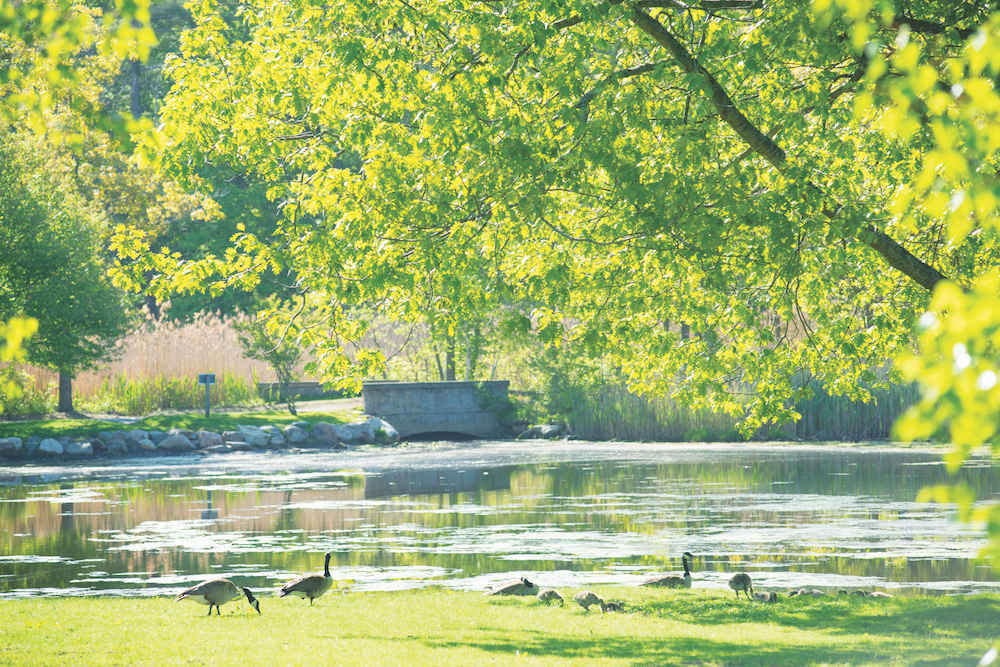
Coolidge Point began its stewardship well over a century ago when Ellen Wayles Randolph, granddaughter of Thomas Jefferson, married Joseph Coolidge from Boston. She relocated to Massachusetts from Monticello, but her youngest son, Thomas Jefferson Coolidge, wanted an outlet to escape the city during the sweltering summer months. In 1871, he found the befitting acreage, and that Manchester-by-the-Sea peninsula ultimately sprouted a series of family summer cottages to take full advantage of the serenity. By the 1890s, a sunken garden was part of the scene to give the family an outdoor venue close to the ocean.
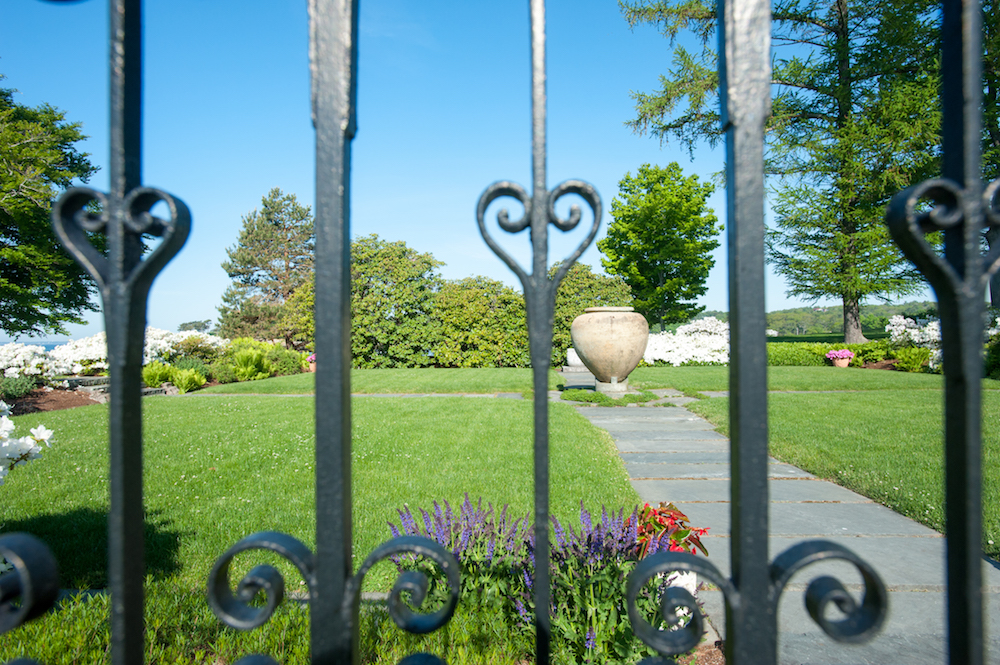
The land was loved and groomed, and became part of the family’s legacy. Water was always intrinsic to the dialogue. Sawmill Brook runs beside the sunken garden, and in the 1950s, a pond was created to further enhance the water features in place. Bridges, stone culverts, and grassy crossings added to the bucolic ambiance. The place proved so alluring to the family that in 1968, Catherine Coolidge Lastavica, MD, built a brick house on the land to serve as a year-round home. Siting the house came easily; the residence was placed where it could survey the ocean view. For the architectural style of the neo-Georgian brick house, Dr. Lastavica looked toward the George Wythe House in Colonial Williamsburg, not only because she admired the lines, but also on the strength of President Thomas Jefferson’s link with Wythe, a legal scholar who taught Dr. Lastavica’s famous great-great-great-great-grandfather.
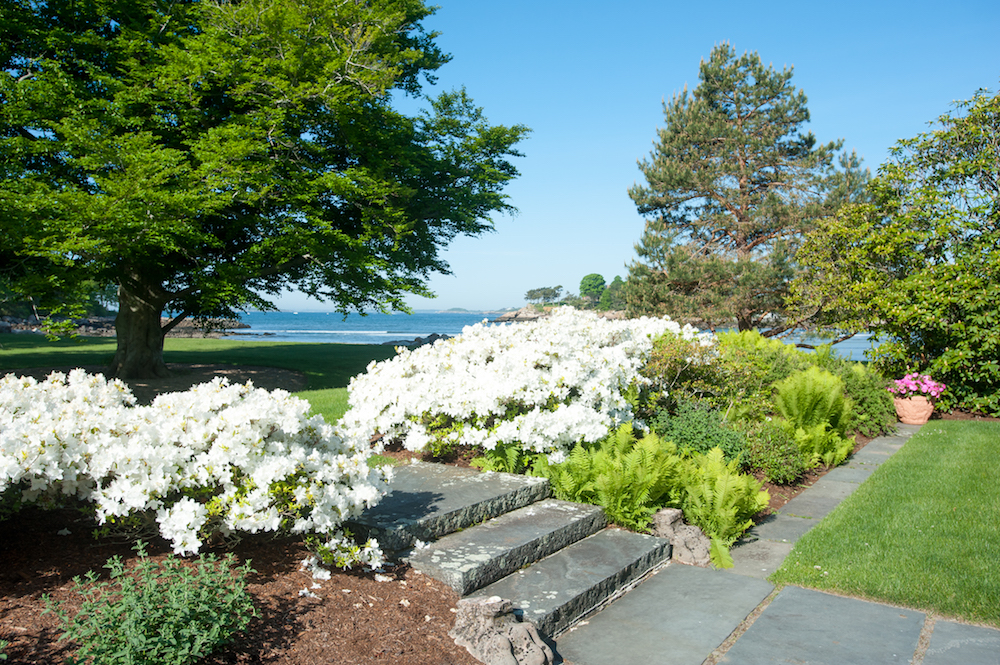
When the Lastavicas decided to tackle the restoration of the sunken garden in 2000, they called on the landscape architectural firm Carol R. Johnson Associates, from Cambridge to design the slightly downsized version of what was originally a more elaborate formal garden. Famed for their work with historic restorations, Johnson Associates wisely installed a simple formal design that would frame the views out to the ocean while softening the sightlines by harnessing the blossoming power of billowing white-blooming azaleas Rhododendron x gandavense ‘Daviesi’ and Rhododendron x ‘Delaware Valley White’ mixed with purple-flowering Rhododendron maximum, all planted in quantity. In spring, the show unfolds as soon as the snow melts with hundreds of sailor-blue Scilla siberica running along the ground, reflecting the hue of the ocean. Following on their heels are hundreds of Narcissus ‘February Gold,’ ‘Dutch Master,’ and ‘Ice Follies’ mingling with woodland and creeping phlox, as well as the gracefully arching stems of white bleeding heart.
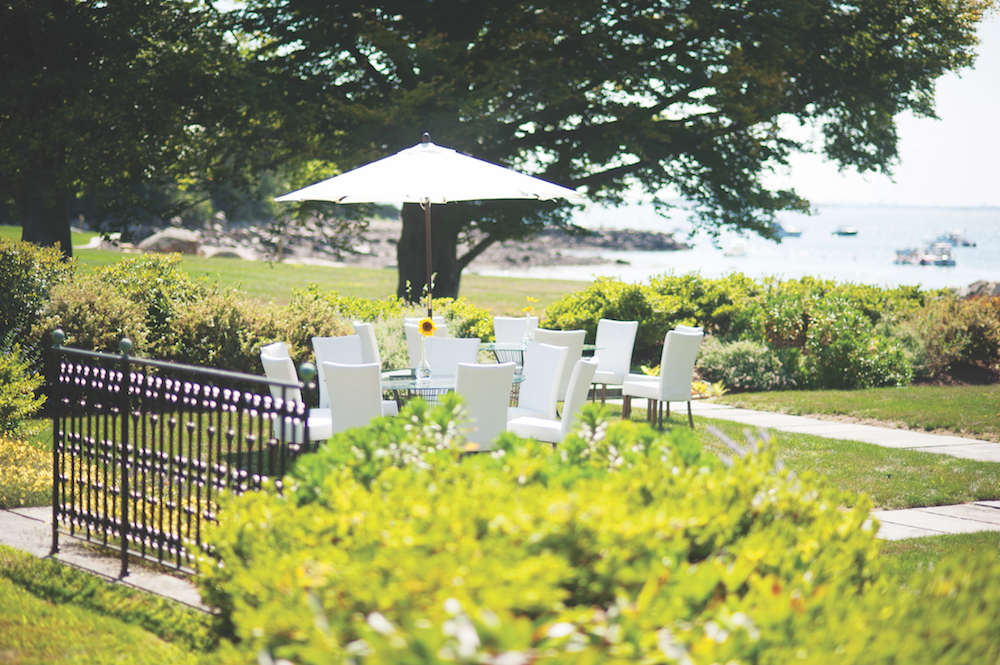
By summer, the border surrounding the garden has moved into a more strident color palette to read against the strong coastal sun. Due to their tolerance of that beating sun coupled with coastal breezes, the landscape architects selected durable workhorses such as Coreopsis verticillata ‘Moonbeam,’ Rudbeckia fulgida ‘Goldsturm,’ Geranium ‘Johnson’s Blue,’ Hosta ‘Royal Standard,’ and daylilies by the dozen. The daylilies were knowledgeably selected for their long blooming cycles and combined, with ‘Stella d’Oro’ blooming nonstop until autumn; for the months of July and August it intersects with the late-blooming muted pale-pink Hemerocallis ‘Catherine Woodbury.’ Although ferns wouldn’t seem the obvious choice given the bright shoreline light, the lady fern, Athyrium filix-femina, is sufficiently stoic to survive and thrive along with fellow shade lover white Astilbe x arendsii ‘Bridal Veil.’
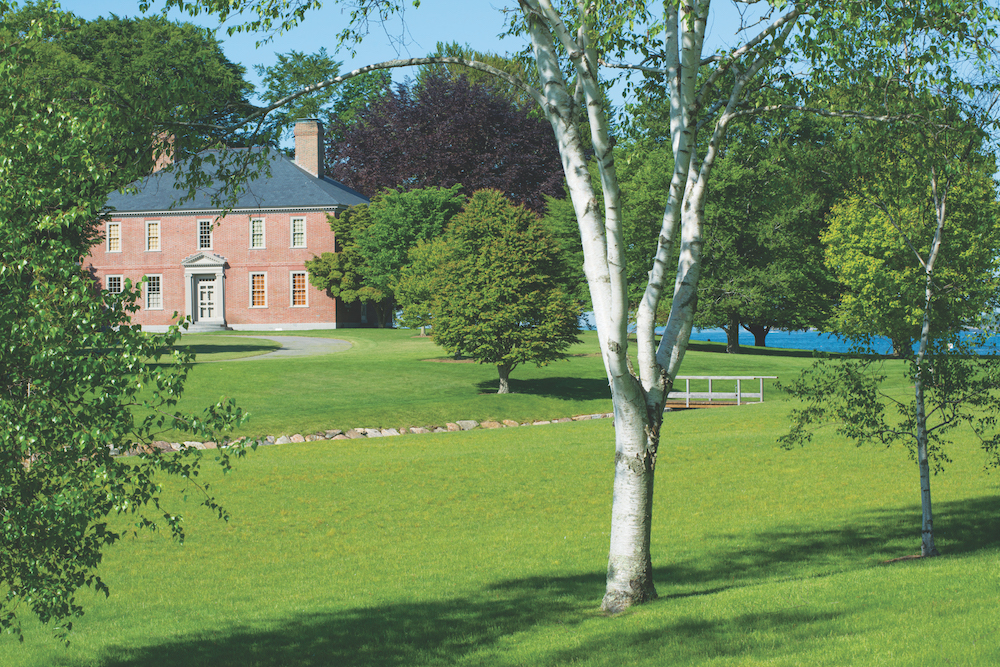
Rather than going the gamut, the plant selections are focused into a few families to make a sharp statement. Similarly, expressive focal points were incorporated into the design. An amphora accents the center of the axis with its sleek lines in this uncluttered and elegant landscape that rightfully does not upstage the drama of the ocean. An ancient water trough draws the eye as you survey the scene. Meanwhile, statuesque scrub pines by the water were left in place to impart a sense of the natural flora. And Colonial Williamsburg also furnished the inspiration for a modest but meaningful tool shed placed farther afield on the property.
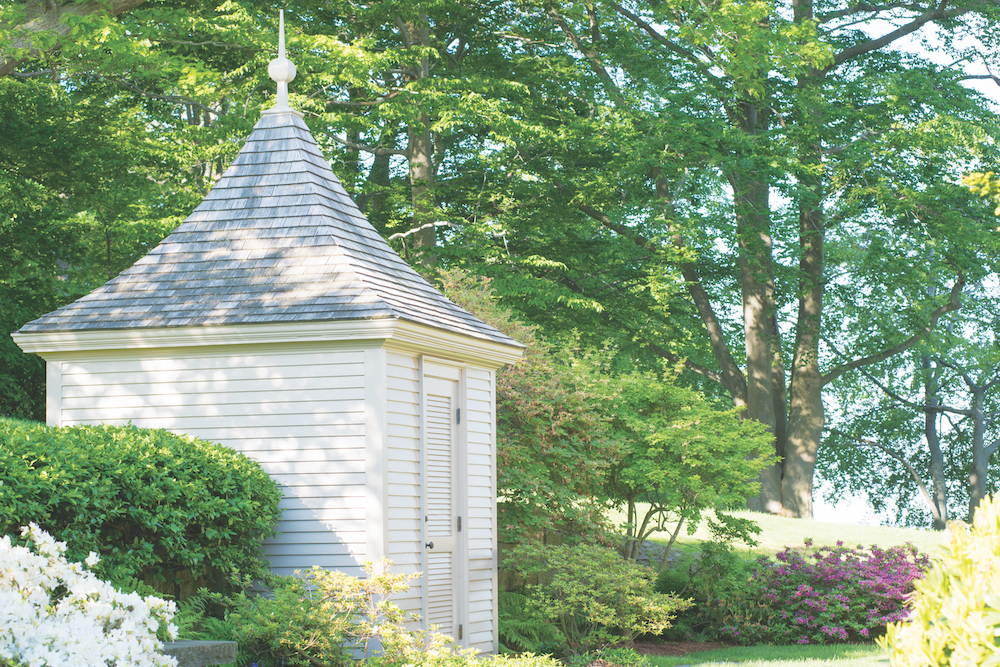
Thanks to the foresight of Dr. Lastavica, who deeded a 15-acre parcel to Historic New England in 2016, the garden will be preserved. At present, Coolidge Point: The Thomas Jefferson Memorial is not open to the public. However, the Thomas Jefferson Memorial Center (a separate nonprofit) uses one of the property’s outbuildings to host occasional events. Most important, this legacy by the sea will be maintained by stewards who love architecture and the land. As a result, everyone’s life will be richer.
Historic New England
historicnewengland.org
jeffersonmemorialcenter.org
